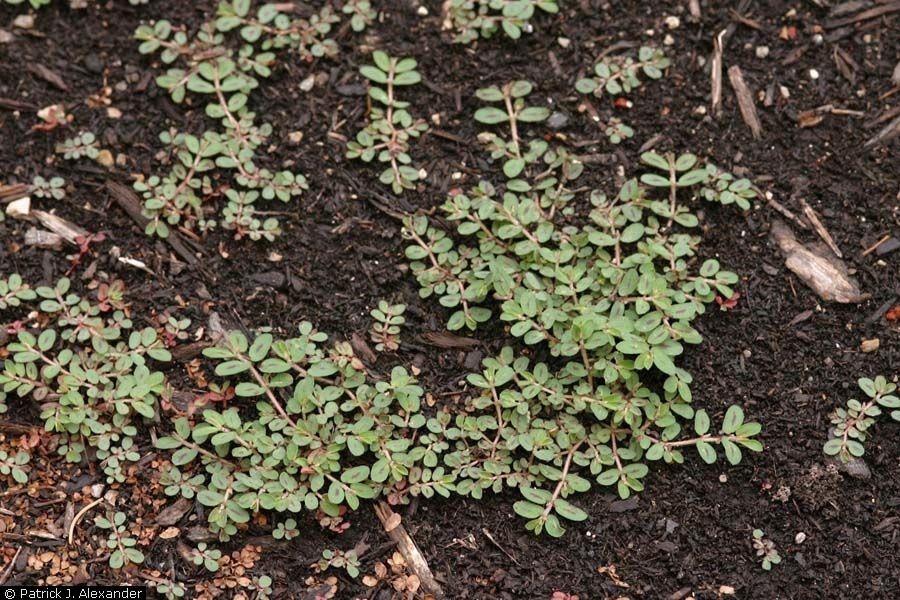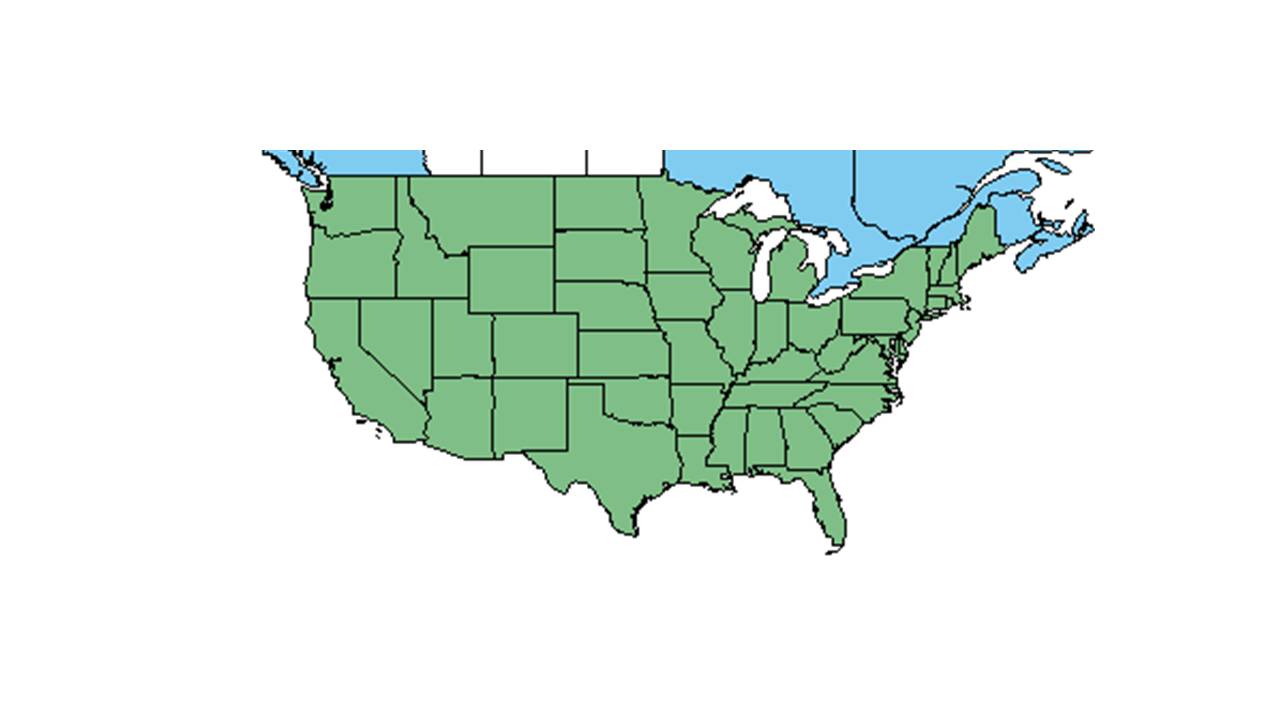Difference between revisions of "Euphorbia maculata"
(→Photo Gallery) |
|||
| Line 18: | Line 18: | ||
}} | }} | ||
Common name: spotted sandmat | Common name: spotted sandmat | ||
| − | |||
| − | |||
==Taxonomic notes== | ==Taxonomic notes== | ||
| + | Synonym: ''Chamaesyce maculata'' (Linnaeus) Small | ||
==Description== | ==Description== | ||
<!-- Basic life history facts such as annual/perrenial, monoecious/dioecious, root morphology, seed type, etc. --> | <!-- Basic life history facts such as annual/perrenial, monoecious/dioecious, root morphology, seed type, etc. --> | ||
| Line 33: | Line 32: | ||
===Phenology=== <!--Timing off flowering, fruiting, seed dispersal, and environmental triggers. Cite PanFlora website if appropriate: http://www.gilnelson.com/PanFlora/ --> | ===Phenology=== <!--Timing off flowering, fruiting, seed dispersal, and environmental triggers. Cite PanFlora website if appropriate: http://www.gilnelson.com/PanFlora/ --> | ||
It has been observed flowering and fruiting in September (FSU Herbarium). | It has been observed flowering and fruiting in September (FSU Herbarium). | ||
| − | + | <!--===Seed dispersal===--> | |
| − | ===Seed dispersal=== | + | <!--===Seed bank and germination===--> |
| − | ===Seed bank and germination=== | + | <!--===Fire ecology===--> <!--Fire tolerance, fire dependence, adaptive fire responses--> |
| − | ===Fire ecology=== <!--Fire tolerance, fire dependence, adaptive fire responses--> | + | <!--===Pollination===--> |
| − | ===Pollination=== | + | <!--===Use by animals===--> <!--Herbivory, granivory, insect hosting, etc.--> |
| − | ===Use by animals=== <!--Herbivory, granivory, insect hosting, etc.--> | + | <!--===Diseases and parasites===--> |
| − | ===Diseases and parasites=== | ||
==Conservation and Management== | ==Conservation and Management== | ||
==Cultivation and restoration== | ==Cultivation and restoration== | ||
Revision as of 12:58, 15 March 2016
Insert non-formatted text here
| Euphorbia maculata | |
|---|---|

| |
| Photo by Patrick J. Alexander, hosted by the USDA-NRCS, The PLANTS Database | |
| Scientific classification | |
| Kingdom: | Plantae |
| Division: | Magnoliophyta - Flowering plants |
| Class: | Magnoliopsida – Dicotyledons |
| Order: | Euphorbiales |
| Family: | Euphorbiaceae |
| Genus: | Euphorbia |
| Species: | E. maculata |
| Binomial name | |
| Euphorbia maculata (L.) Small | |

| |
| Natural range of Euphorbia maculata from USDA NRCS Plants Database. | |
Common name: spotted sandmat
Contents
Taxonomic notes
Synonym: Chamaesyce maculata (Linnaeus) Small
Description
Euphorbia maculata is a weedy annual herbaceous plant. It tends to grow low to the ground and somewhat repent (FSU Herbarium).
Distribution
Ecology
Habitat
E. maculata prefers moist to wet sandy soils like alluvial sands, moist loamy or clayey sand, and coarse calcareous gravelly soils (FSU Herbarium). It is found in a variety of natural and disturbed community types, including pine flatwoods, sand dunes, river banks, open shorelines, and near brackish marshes (FSU Herbarium). Disturbed habitat includes railways, citrus furrows, cracks in pavement, roadside ditches, and recently clear-cut, site prepared and planted slash pine flatwoods (FSU Herbarium).
Phenology
It has been observed flowering and fruiting in September (FSU Herbarium).
Conservation and Management
Cultivation and restoration
Photo Gallery
References and notes
Florida State University Robert K. Godfrey Herbarium database. URL: http://herbarium.bio.fsu.edu. Last accessed: June 2014. Collectors: L. C. Anderson, D. Hall, R. K. Godfrey, R. Komarek, L. Neel, R. A. Norris, A. Schmidt, and C. R. Slaughter. States and Counties: Florida: Calhoun, Collier, Franklin, Gadsden, Leon, Liberty, Polk, Taylor, and Wakulla. Geogia: Camden, Clinch, Glynn, and Thomas.